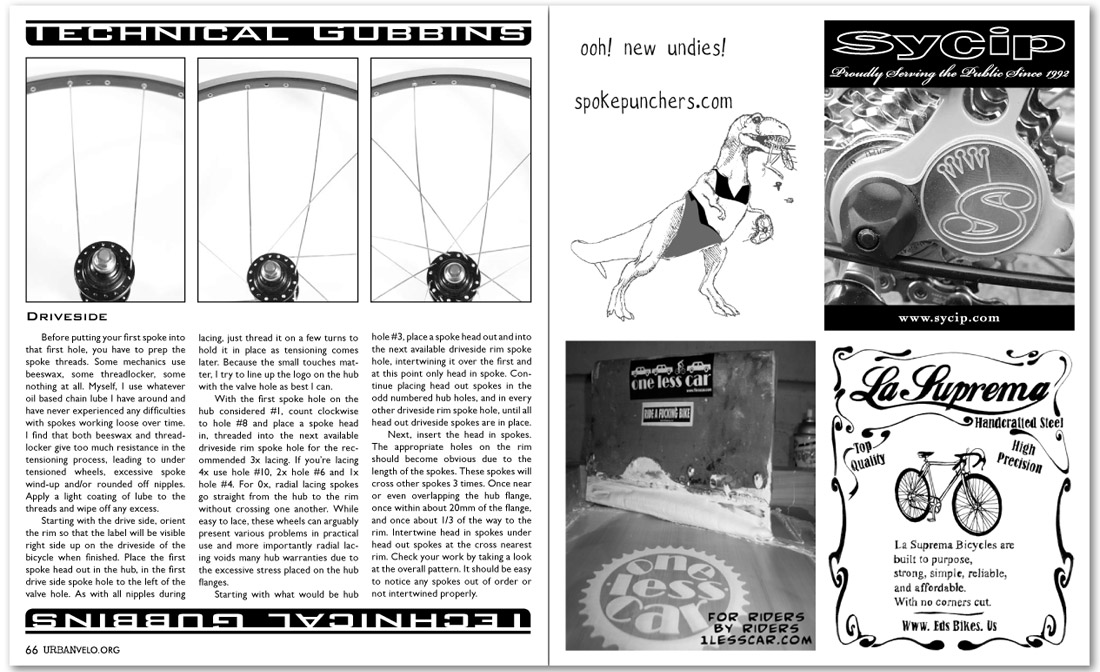| Wheelbuilding 101... Continued
Driveside
Before putting your first spoke into that first hole, you have to prep the spoke threads. Some mechanics use beeswax, some threadlocker, some nothing at all. Myself, I use whatever oil based chain lube I have around and have never experienced any difficulties with spokes working loose over time. I find that both beeswax and threadlocker give too much resistance in the tensioning process, leading to under tensioned wheels, excessive spoke wind-up and/or rounded off nipples. Apply a light coating of lube to the threads and wipe off any excess.
Starting with the drive side, orient the rim so that the label will be visible right side up on the driveside of the bicycle when finished. Place the first spoke head out in the hub, in the first drive side spoke hole to the left of the valve hole. As with all nipples during lacing, just thread it on a few turns to hold it in place as tensioning comes later. Because the small touches matter, I try to line up the logo on the hub with the valve hole as best I can.
With the first spoke hole on the hub considered #1, count clockwise to hole #8 and place a spoke head in, threaded into the next available driveside rim spoke hole for the recommended 3x lacing. If you’re lacing 4x use hole #10, 2x hole #6 and 1x hole #4. For 0x, radial lacing spokes go straight from the hub to the rim without crossing one another. While easy to lace, these wheels can arguably present various problems in practical use and more importantly radial lacing voids many hub warranties due to the excessive stress placed on the hub flanges.
Starting with what would be hub hole #3, place a spoke head out and into the next available driveside rim spoke hole, intertwining it over the first and at this point only head in spoke. Continue placing head out spokes in the odd numbered hub holes, and in every other driveside rim spoke hole, until all head out driveside spokes are in place.
Next, insert the head in spokes. The appropriate holes on the rim should become obvious due to the length of the spokes. These spokes will cross other spokes 3 times. Once near or even overlapping the hub flange, once within about 20mm of the flange, and once about 1/3 of the way to the rim. Intertwine head in spokes under head out spokes at the cross nearest rim. Check your work by taking a look at the overall pattern. It should be easy to notice any spokes out of order or not intertwined properly.
(continued) |
|
|
|
|
|

